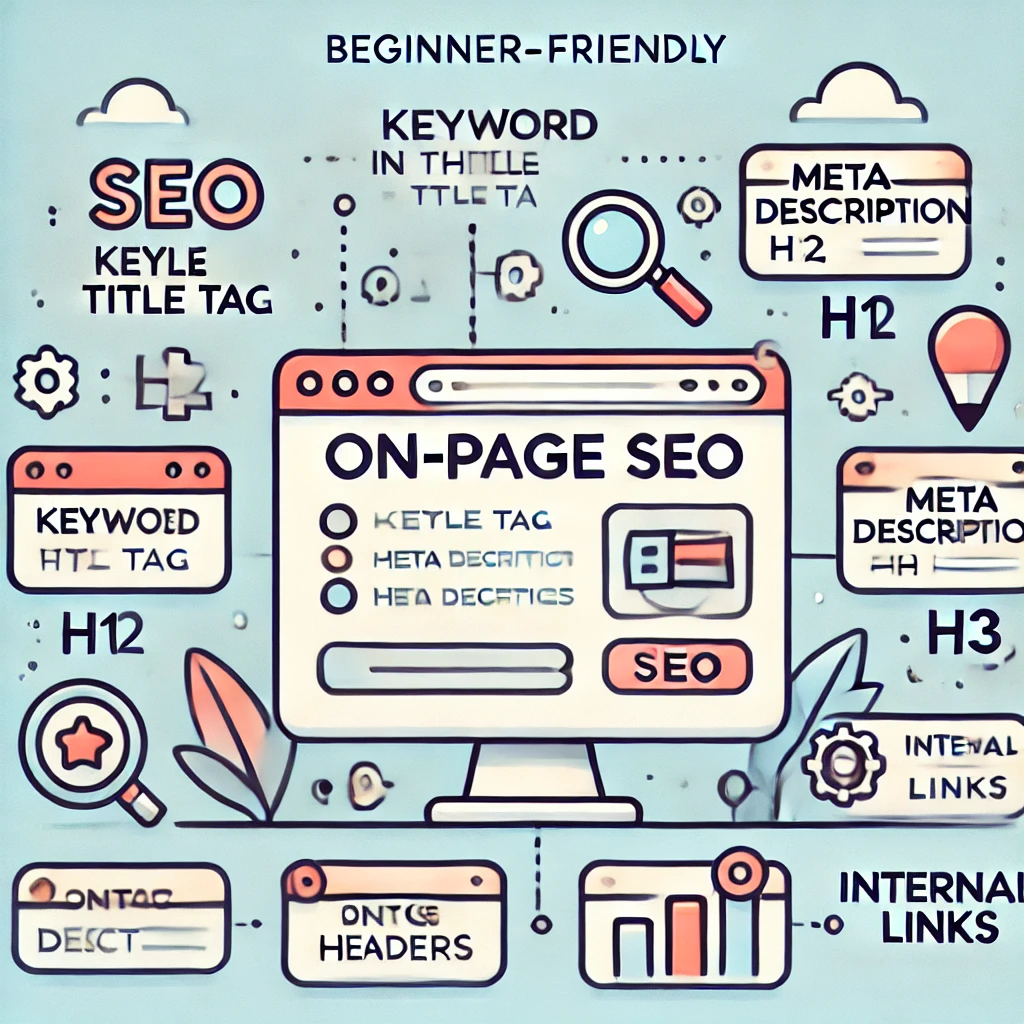On-Page SEO Best Practices for Beginners
If you’re new to SEO (Search Engine Optimization), you might have heard about “on-page SEO.” But what is it? In simple terms, on-page SEO refers to the things you can control on your website to help it rank higher in search engines. This includes optimizing content, images, and the way your website is structured. Here are some easy on-page SEO tips for beginners to help get you started.
1. Choose the Right Keywords
The first step in on-page SEO is selecting the right keywords. Keywords are the words or phrases people type into search engines when looking for something. For example, if you run a baking blog, keywords might be “easy cake recipes” or “how to bake bread.”
Start by thinking about what people might search for to find your website. Use tools like Google Keyword Planner or Ubersuggest to find popular keywords related to your topic. Once you have your keywords, make sure to use them naturally throughout your content.

2. Create High-Quality Content
Content is king in the world of SEO. The more helpful and informative your content is, the better chance you have of ranking higher in search engines. Make sure to create content that is well-written, easy to read, and provides value to your audience.
It’s important to include your keywords in the content, but don’t overdo it. This is called keyword stuffing and it can actually hurt your rankings. Focus on writing naturally, and sprinkle your keywords in where they fit.
3. Optimize Title Tags and Meta Descriptions
Title tags and meta descriptions are small but important parts of on-page SEO. The title tag is the title of your web page that appears in search results, and the meta description is the short description under it.
Your title should include your main keyword and clearly describe what your page is about. It should be between 50-60 characters.
The meta description should also contain your keyword and be around 150-160 characters. Write something that encourages people to click on your link, like a mini-ad for your page.
4. Use Headers (H1, H2, H3)
Breaking up your content with headers not only makes it easier for people to read, but it also helps search engines understand your content better.
The H1 tag is usually the title of your page, and there should only be one H1 per page. The H2 and H3 tags are used for subheadings to organize your content. For example, the title of this article is the H1, and the section titles like “Choose the Right Keywords” are H2.
5. Make URLs SEO-Friendly
Your website’s URLs (the link to each page) should be short, descriptive, and contain your keyword. Avoid long or confusing URLs with lots of numbers and symbols. For example, instead of www.example.com/post1234 it’s better to have www.example.com/easy-seo-guide.
6. Optimize Images
Images can make your content more engaging, but they can also slow down your website if they’re not properly optimized. To improve your on-page SEO, make sure your images are the right size, so they load quickly.
Also, use descriptive file names for your images. Instead of a file name like IMG1234.jpg, use something like easy-cake-recipe.jpg. Don’t forget to add alt text, which is a short description of the image that helps search engines understand what the image is about.
7. Internal and External Links
Linking to other pages on your website is called internal linking. This helps visitors navigate your site, and it also helps search engines find your content. Try to link to relevant pages within your site where it makes sense.
External linking is when you link to other websites. It can make your content more trustworthy, especially if you link to high-quality, reliable sources.
8. Mobile-Friendly Design
More and more people are browsing the web on their phones, so it’s important that your website looks good and works well on mobile devices. A mobile-friendly design not only improves the user experience but also helps your SEO rankings since Google favors mobile-friendly websites.
Final Thoughts
On-page SEO may seem overwhelming at first, but by following these simple best practices, you’ll be well on your way to improving your website’s search engine rankings. Start by focusing on choosing the right keywords, writing high-quality content, and optimizing your images and URLs. Remember, SEO is a long-term strategy, so be patient and consistent.
